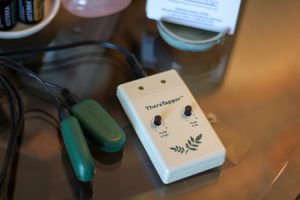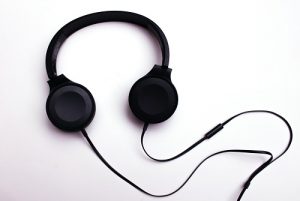Eye, Movement, Desensitization and Reprocessing (EMDR) is a standard method for treating Post-Traumatic Stress Disorder as well as helping people recover from disturbing life experiences and subsequent symptoms such as; depression, anxiety and more.
EMDR treatment consists of desensitization and reprocessing of trauma memories. The role of Bilateral Stimulation (BLS) or Dual Attention Stimuli (DAS) is critical for EMDR therapy to work. Clients will focus on the disturbing memory including negative thoughts and beliefs about themselves, emotions and body sensations while simultaneously following the BLS. Alternating BLS comes in the form of eye movements, tactile or auditory tones
BLS, as part of the EMDR method, is believed to desensitize the trauma memories (reducing emotional distress and memory vividness) while activating the clients “information processing system” and taxing the working memory. This allows new associations to arise between the trauma memory and more adaptive information. This process facilitates healing and mental wellness to take place. The BLS helps to anchor the client, keeping one foot in the counseling office while the other foot is in the disturbing memory.
Before you start processing memories, your EMDR therapist will introduce BLS and determine which type is best for you.
Eye Movements- light bar or wand

Eye movements are the most commonly used BLS. Eye movements are activated through the use of a light bar or when therapists use a wand and clients track it back and forth with their eyes.
Eye movements are believed to replicate what happens when clients are in REM sleep and engages the natural processing of the days events. Clients with seizure disorders or Traumatic Brain Injuries (TBI) may not benefit by using eye movements and will do better with tactile or auditory BLS.
Tactile- hand held device or self tapping
 Tactile or sensory bilateral stimulation is used with an electronic tapping device which consists of paddles that the client will hold in their hands.
Tactile or sensory bilateral stimulation is used with an electronic tapping device which consists of paddles that the client will hold in their hands.
Clients can also use self-tapping for tactile stimulation. This includes the “Butterfly Hug” (hands crossed over chest while tapping on collar bone area) or hands resting on each leg and tapping on top or side of the leg.
Also, with clients permission the therapist may tap back and forth on the top of the clients palms while their hands are rested on their legs or a table in front of them.
Auditory- sound through head phones
 Auditory tones can be used by clients wearing headphone and listening to a beep back and forth in each ear. Some auditory devices may even generate music as sounds versus a beeping tone.
Auditory tones can be used by clients wearing headphone and listening to a beep back and forth in each ear. Some auditory devices may even generate music as sounds versus a beeping tone.
Additional Notes About BLS
Some clients benefit by a combination of more than one bilateral stimulation at the same time. Your EMDR therapist will work with you to find the best fit.
EMDR can be offered virtually as well as in person using a variety of innovative apps to provide BLS.
EMDR therapy should not be done on yourself. It requires a trained EMDR therapist with knowledge and understanding of EMDR therapy and the ability to implement the protocol and adjust the BLS so that you can have the best results possible.




